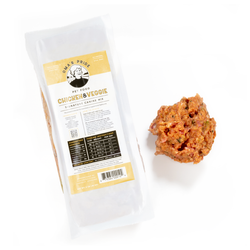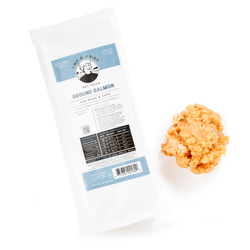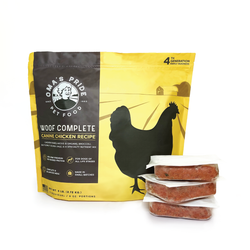Benefits Of Raw Feeding
A fresh diet can provide endless health benefits for your pet.
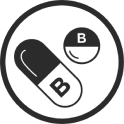
Increases nutrient absorption

Supports healthier skin & shinier coat

Relieves joint & skin inflammation

Provides natural allergy relief

Helps to regulate metabolism
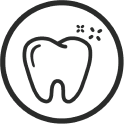
Promotes eye, gum & teeth health

Increased alertness & improved behavior

Provides greater joy & interest in mealtime
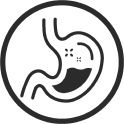
Supports a healthy gut
The Proof is in the comparison
Oma’s meals
|
Kibble
|
|---|---|
Improves DigestibilityRaw food contains real, bioavailable, digestible ingredients, leading to smaller stools, a healthy gut, and fewer digestive issues like gas and bloating. |
Highly ProcessedKibble is highly processed, which can strip nutrients from the ingredients, reducing bioavailability and nutritional quality. |
Healthier Skin & CoatRaw diets are rich in moisture, natural healthy fats, and fresh bioavailable foods, leading to a healthier skin, a shinier coat, less inflammation, fewer allergies, and less shedding. |
Potential for Allergies & SensitivitiesKibble contains low-quality protein, no moisture, excess carbs, grains, by-products, and additives which can trigger inflammation and chronic health issues. |
Better Dental HealthRaw food, without high sugar levels or carbohydrates, reduces dental disease by boosting the immune system. Chewing on raw, meaty bones also cleans tartar and plaque from teeth. |
Dental & Other Health IssuesKibble’s starchy content can stick to teeth and promote dental disease. Long-term feeding is linked to obesity, joint problems, inflammation, gut biome disruption, and certain cancers. |
Increases Energy & VitalityFresh, animal-based foods contain higher-quality protein and bioavailable nutrients that boost muscle tone, energy, stamina, and thriving health. |
Fillers & AdditivesKibble often relies on cheap carb-heavy fillers like corn, grains, soy, and even by-products, which are harmful for carnivorous pets' health. |
High Quality & ReliabilityOur high-quality fresh food is USA-sourced from human-grade meat, bones, organs, & select veggies. Nutrition you can rely on—it’s worth it, because they’re worth it. |
Low QualityLow-quality kibbles often opt for cost-effective ingredients at the expense of quality, leading to recalls that pose health risks to dogs and humans. |
We believe that the key to our pets living long, healthy, and happy lives starts in their bowl. It's our mission to help pets thrive through a fresh, natural diet. Biologically appropriate and consistent with the digestive makeup of their ancestors, fresh raw diets preserve crucial enzymes and nutrient composition. We pride ourselves on offering species appropriate foods for dogs and cats, as nature intended.
Canines thrive on a carnivore-focused diet consisting of raw meat, bones, organs, & select veggies. Felines thrive on an exclusively carnivorous diet of raw meat, bones, & organs.
Always crafted in small batches from USA-sourced, human-grade meat, organs, bones, & select veggies. Free from additives, by-products, grains, corn, soy, sugar, or other fillers.
Why Oma’s Pride?

Fresh & Natural
What you see is what you get. Always free from additives, by-products, grains, corn, soy, sugar, or other fillers.

Hand-Crafted in Avon, CT
Our pet food is human-grade, USA-sourced, and made in small batches with care from local sources we’ve trusted for decades.

Pioneers in Raw Pet Food
As pioneers in raw pet food, our unwavering commitment to quality and our customers stands the test of time.
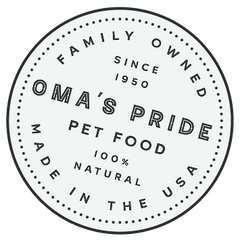
More about Raw Feeding

Do Dogs Get Bored? 7 Best Ways To Entertain Them

